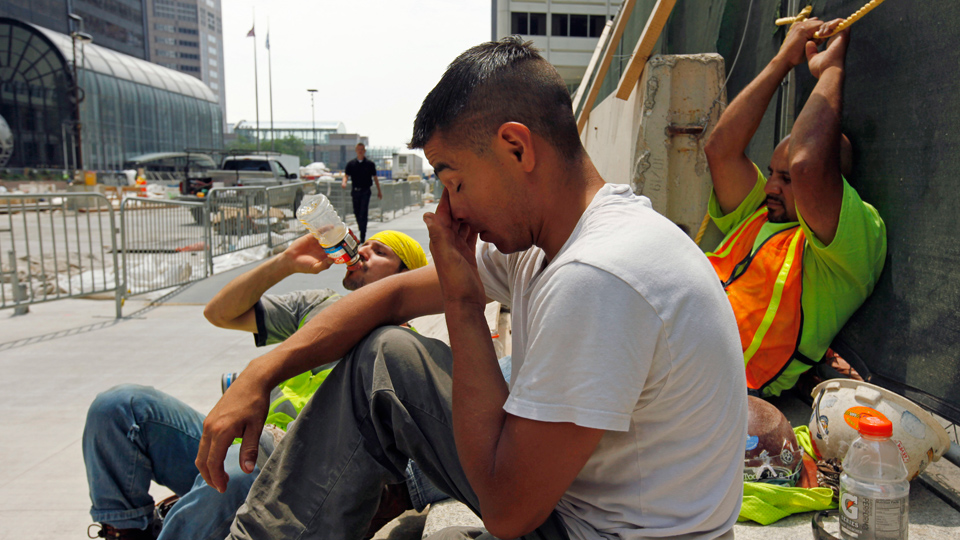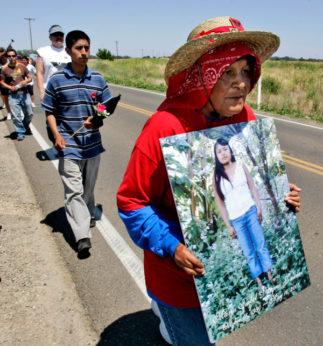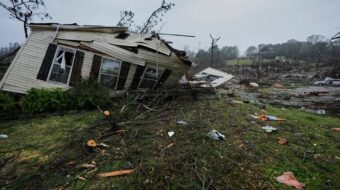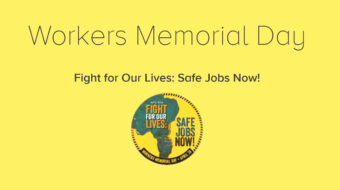
LOS ANGELES (PAI)—For Peggy Frank, a Los Angeles letter carrier, any federal or California safety rule ordering her employer—and all other firms—to protect workers from the hazards of excess heat didn’t work.
Frank, a 63-year-old grandmother, collapsed and died from California’s monstrously high heat while delivering the mail in Woodland Hills, a section of Los Angeles, in mid-July. The temperature in that particular neighborhood the day she died? 107 degrees.
Frank isn’t the only worker, old or young, or in-between, to succumb to the dangers of the high heat that has prostrated much of the country this year, or in years past. She’s just the latest one.
And those deaths, among farm workers, truckers, utility workers, construction workers, Letter Carriers, and others who always work outside in hot conditions, led 130 groups—including several unions—and 88 public health specialists to formally petition the agency to start rulemaking on requiring firms to protect their workers from heat.
In its 48-year existence, OSHA and state OSHAs—except for California, Minnesota, and Washington state—have never required companies to protect their workers from dangers from high outdoor heat, said Public Citizen’s Health Research Group, which assembled the petition to OSHA.
The petition goes hand-in-hand with “a national campaign to raise awareness around the impacts of climate change on the health and safety of workers, as well as other vulnerable populations, while advancing standards to prevent injuries and deaths from outdoor and indoor heat stress,” it said.
To raise that consciousness, the group released Extreme Heat And Unprotected Workers, a report on heat stress on workers, which they also submitted to OSHA.
The report covered agricultural and construction workers in areas of the U.S. that experienced extreme heat in July 2017 and, using the same high heat standards, over the July 4th holiday week this year.
“Approximately 130 million workers around the country lack any protection from a heat stress standard,” a summary says. “According to the government, 69,374 workers were seriously injured from heat between 1992 and 2016, and 783 U.S. workers died from heat exposure. These numbers are generally agreed to be gross undercounts.”
“OSHA can cite companies for heat stress violations under its General Duty Clause, but from 2013-2017, Cal/OSHA, with a heat standard since 2006, performed 50 times more inspections than OSHA in which there was one or more citations or violations concerning heat,” the report adds.
That still didn’t stop collapses and deaths, union leaders, members, and safety experts said on July 17.

“Farm workers are not agricultural implements,” declared Farm Workers President Arturo Rodriguez.
“We attended the funerals of too many California farm workers who needlessly died from extreme heat,” he added. That led UFW to help persuade then-GOP Gov. Arnold Schwarzenegger and the legislature to enact first-in-the-nation comprehensive heat standards in 2005 and Democratic Gov. Jerry Brown to strengthen anti-heat-exposure rules a decade later.
“Republicans and Democrats can take action today to stop these unnecessary deaths by creating national standards such as those we won in California.”
Raudel Felix Garcia, a Farm Workers union member, told of the shock he received from a phone call, almost precisely a decade ago, telling him heat killed his brother Audon just five days after he arrived in the U.S. to pick grapes. Audon’s death helped prompt California to act against worker heat exposure.
Audon and a co-worker loaded 750 boxes, each weighing 25 pounds, onto a truck—in 102-degree heat. Heat exhaustion killed Audon. “My brother and his co-worker had no heat safety trainings or protocols” to battle heat illness, Raudel Garcia said. “That is unacceptable. If a job consists being out in the sun, working long shifts in the worst conditions, employers need to protect their workers.”
But it’s not just farm workers.
“United Airlines is a company that makes billions in profit, but the trucks I work in do not have air conditioning,” said Unite Here member Arthur Fatu, a catering truck driver for United Airlines in Houston. “I call my truck a traveling sauna. I have suffered from heat rash, dizziness, and headache while working on hot days. Working in extreme heat puts us at risk of heat exhaustion and heat stroke.”
Dave LeGrande, the recently retired Safety and Health Director of the Communications Workers, said telephone line workers are just as much at risk as other outdoor workers. Since 2000, the union saw three members killed by heat stress from working outdoors, the latest in 2011.
Though CWA has initiated and implemented heat education and anti-heat stress campaigns among its members and bargained in contracts to get firms to battle heat stress, “We do witness employer negligence which results in serious, but not fatal, heat stress health problems.”
“It is inhumane and inexcusable that despite the long record of success of California’s worker safety agency, Cal/OSHA, in reducing heat-induced worker death and illness, the majority of U.S. workers who are at risk for heat stress are unprotected by any heat standard,” said Dr. Sidney Wolfe, founder of Public Citizen’s Health Research Group.
All this is too late for Peggy Frank, though OSHA can use its General Duty Clause to punish the Postal Service for worker exposure to and death from high heat. The last time it did so was six years ago, in Independence, Missouri, after a Letter Carrier collapsed and died that summer. OSHA fined USPS $70,000.
“To have my mom at 107 [degrees], humidity, carrying the mailbag around with no air conditioning in the car—yeah, I’m sure she’s probably gonna overheat,” Frank’s son Kirk Kessler told CBS2 News in Los Angeles.
Like free stuff? So do we. Here at People’s World, we believe strongly in the mission of keeping the labor and democratic movements informed so they are prepared for the struggle. But we need your help. While our content is free for readers (something we are proud of) it takes money — a lot of it — to produce and cover the stories you see in our pages. Only you, our readers and supporters, can keep us going. Only you can make sure we keep the news that matters free of paywalls and advertisements. If you enjoy reading People’s World and the stories we bring you, support our work by becoming a $5 monthly sustainer today.











